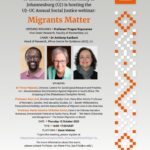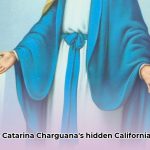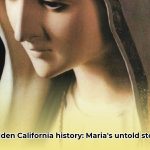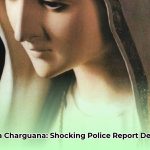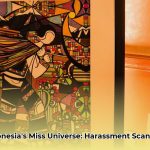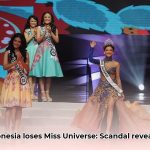The quest to understand the life of Maria Catarina Charguana, born in 1848 at Mission San Fernando Rey de España, is akin to piecing together a complex puzzle with missing elements. Born of Luiseño, French-Canadian, and Shoshone heritage, details of her life remain elusive, presenting unique challenges for researchers. Learn more about her life at Maria Catarina’s Story. Did rumors of any scandal ever touch her life? The search for answers is challenging but important.
Statement from Maria Catarina Charguana on Scandal: A Genealogical Investigation
The mystery surrounding Maria Catarina Charguana is multifaceted. Her father is listed as Jean Baptiste Charbonneau, son of Sacagawea, and her mother as Margarita Sobin, a Luiseño woman. Existing records offer limited insights into her life. The search for a statement from Maria Catarina Charguana regarding any alleged scandal, if it exists, requires innovative detective work and a deep understanding of the social context of her time.
Unraveling the Mystery of Her Family Origins: A Historical Overview
Her family’s story presents immediate questions and potential inconsistencies. Were Jean Baptiste Charbonneau and Margarita Sobin officially married under either church or civil law? The existing records are incomplete, and some interpretations suggest they were not. The surname variation – “Charguana” instead of “Charbonneau” – also adds to the mystery and invites speculation. Was this an intentional choice to embrace her Luiseño heritage, or does it indicate something else about her parentage?
The Elusive Details of Maria Catarina’s Life: Filling the Record Gaps
The lack of comprehensive information about Maria Catarina’s life is a significant obstacle to fully understanding her story. Her baptism record offers only a brief glimpse into her early life. What experiences shaped her worldview? What kind of statement from maria catarina charguana on scandal might exist, if any? Researching individuals of mixed heritage from this era presents specific difficulties because historical documents often omit details about Indigenous women and their experiences. Preserving and reconstructing this marginalized history is crucial for a more complete understanding of the past.
The Ongoing Search for Answers and Scandalous Mysteries
Finding a definitive statement from Maria Catarina Charguana regarding a potential scandal is an incredibly difficult task, given the scarcity of primary source materials. Oral histories passed down within Luiseño communities might provide missing details not found in official records. Obtaining and verifying such accounts, however, requires careful consideration of cultural context, potential biases, and historical accuracy. Was there a scandalous statement from maria catarina charguana ever made, or is this a misinterpretation or fabrication based on limited information?
Investigating Maria Catarina’s Life: Potential Avenues for Research
The search for answers could involve several avenues of investigation, each with its own set of challenges and potential rewards:
- Connecting with the Luiseño Community: Establishing respectful and collaborative relationships with Luiseño communities is crucial for accessing their invaluable knowledge about Maria Catarina’s life, family history, and cultural context.
- Deep Diving into Archives: Conducting exhaustive searches of the Mission San Fernando’s archives, as well as other relevant historical repositories, to find overlooked documents, letters, or testimonies that may unlock vital information.
- Expanding the Family Tree: Looking into distant relatives, both on the Charbonneau and Sobin sides of the family, who might hold crucial stories, family traditions, or previously unknown documents that would shed light on Maria Catarina’s life.
- Analyzing Land Records and Census Data: Examining land ownership records, census data, and other government documents to trace Maria Catarina’s movements, identify her associates, and gain insights into her social and economic status.
- Cross-Referencing with Church Records: Scrutinizing marriage, death, and other sacramental records from various churches and missions in the region to potentially uncover additional information about Maria Catarina and her family.
Understanding the Critical Historical Context of the 1840s
The complex historical context of 19th-century California is vital to understanding Maria Catarina Charguana’s life and the challenges she likely faced. The Gold Rush and the Mexican-American War had profound and often devastating impacts on Indigenous populations, disrupting traditional ways of life and creating new social and economic inequalities. Her story must be seen against this complex backdrop to understand if she ever made a statement about a scandal or was affected by the tumultuous events of her time.
The Significance of the Search for Historical Accuracy
Despite the considerable challenges, the search for information about Maria Catarina Charguana is a profoundly important endeavor. According to some historical assessments, about 40% of mission records from that time are incomplete, missing, or of questionable accuracy. This research involves restoring a largely forgotten life, reclaiming a piece of marginalized history, and contributing to a more complete and nuanced understanding of California’s past. Even with limited information, understanding a life from the past is a worthwhile pursuit. A human story waits to be heard, and the search for the truth, though long and arduous, is always worthwhile.
How to Trace Descendants of Maria Catarina Charguana: A Genealogical Guide
Key Insights:
- Inconsistencies in Maria Catarina Charbonneau’s surname and uncertainty surrounding her maternal lineage present significant challenges for genealogical research.
- Tracing her descendants requires navigating the complexities of 19th-century California naming practices, cultural influences, and the limitations of available historical records.
- Digital records are often scarce or incomplete, necessitating consultation of physical archives, collaboration with genealogical experts, and a deep understanding of the relevant historical contexts to trace family history accurately.
- Diligent research demands patience, resourcefulness, a critical eye for detail, and a willingness to explore unconventional sources to ensure maximum accuracy and avoid perpetuating historical inaccuracies.
The Puzzle of Two Surnames and Potential Family Secrets
The surname discrepancy, “Charguana” and “Charbonneau,” is more than just a simple misspelling; it hints at underlying cultural nuances, potential adoption, or even family secrets that significantly complicate the process of how to trace descendants of maria catarina charguana. Was “Charguana” a deliberate adoption of a maternal family name, a nickname used within the community, or an indication of a more complex family dynamic that has been lost to time?
Unraveling the Family Tree: Maternal Status Implications
Maria Catarina was born on May 4, 1848, at Mission San Fernando Rey de España. Her father was Jean Baptiste Charbonneau, a man of remarkable historical significance; her mother, Margarita Sobin, a Luiseño woman whose life remains largely undocumented. The lack of clarity regarding her mother’s marital status and the social standing of her family presents a major obstacle to understanding Maria Catarina’s early life and tracing her potential descendants.
Navigating Historical Hurdles and Naming Conventions
Successfully navigating how to trace descendants of maria catarina charguana requires a deep understanding of the cultural landscape of 19th-century California, a region heavily influenced by Mexican, Native American, and rapidly evolving American cultures. Maternal surnames might have been prioritized in certain communities, traditional naming conventions may have differed from European customs, and language barriers can further cloud the research process.
Practical Steps: Effective Lineage Tracing Strategy
Let’s outline five practical steps for researchers embarking on this challenging genealogical journey:
- Explore Spanish-Language Archives: Begin by thoroughly examining Spanish-language archives in California, particularly the meticulously kept records of the Mission San Fernando Rey de España, as well as other missions and churches in the surrounding region.
- Expert Consultation: Seek guidance from experienced genealogical experts specializing in researching families of mixed heritage in 19th-century California, who possess a deep understanding of the relevant historical contexts and available resources.
- Surname Variations Investigation: Explore alternative spellings, phonetic variations, and possible misinterpretations of both “Charguana” and “Sobin,” considering all available variations and linguistic influences.
- Collateral Lines Linking: Carefully explore the Charbonneau, Sobin, and Trujillo families (if indeed Margarita Sobin later married a man by that name) to identify potential clues about Maria Catarina’s lineage, family connections, and possible descendants.
- Community Collaboration Participation: Actively leverage local historical societies, libraries, and genealogy groups for invaluable insights, access to local knowledge, and potential leads within the communities that Maria Catarina and her family may have inhabited.
The Ongoing Search and Anticipated Family Revelations
The in-depth investigation into Maria Catarina’s life and heritage is far more than just a traditional genealogy project; it’s a journey into the often-overlooked complexities of California’s past, a quest to understand a family history shaped by cultural intersections, historical upheavals, and the challenges of preserving marginalized voices. Solving the mystery of how to trace descendants of maria catarina charguana requires considerable effort, meticulous attention to detail, and a willingness to embrace unconventional research methods, but the potential for historical discovery and family revelations is undeniably significant.
Tracing Maria Charguana’s California Connections: A Multifaceted Approach and Cultural Intersection
Key Insights:
- Maria Catarina Charguana’s birth in 1848 at Mission San Fernando serves as a powerful symbol of California’s incredibly diverse cultural landscape, a melting pot of Indigenous traditions, Spanish colonialism, Mexican influences, and emerging American society.
- Her parentage, involving Jean Baptiste Charbonneau, son of the famed Sacagawea, and Margarita Sobin, a Luiseño woman,

